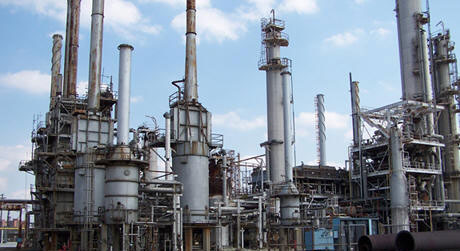When it comes to the factors impacting the efficiency of an evaporative cooling tower or a cross flow cooling tower, it is essential to discuss the cooling method. Irrespective of the complexities involved, a cooling tower is an HVAC unit when compared to the rest of industrial equipment. This technology makes use of two readily available resources (water and air) to reject the heat generated during the manufacturing process in a wide range of businesses, including oil refineries, chemical plants, power plants, among many other things.
The efficiency of cooling towers has a considerable impact on the total efficiency of commercial and industrial cooling systems and can be improved significantly. Because the cooling tower is a critical component of these systems, whether it is a commercial cooling tower intended for an office building or an industrial cooling tower intended for a refinery, maintaining and improving its performance would be extremely useful, if not essential.
Cooling towers are made up of a variety of components that perform a variety of roles, and the appropriate performance of each component corresponds to the overall performance of the cooling process. Aside from the quality of the tower parts, the efficiency of the cooling tower would be mostly dependent on the climatic conditions, particularly the relative humidity of the ambient air and the temperature of the wet-bulb water.
The Approach Of A Cooling Tower
There are two factors that are significant indications of the cooling tower’s efficiency: the quality of the makeup water and the number of concentration cycles (COC). These considerations will also aid in determining whether or not there is room to improve the efficiency of the cooling tower. The quality of the makeup water and the number of concentration cycles are two important indicators of cooling tower efficiency (COC). These variables will also help determine whether or not there is room to improve the cooling tower’s efficiency.
There are two parameters that influence the computation of cooling tower efficiency: the range of the cooling tower and the angle at which it is approached by the cooling tower. As previously stated, the effectiveness of the tower is largely dependent on the temperature of the wet-bulb in the surrounding environment. In an ideal world, the cold water temperature would be the same as the wet-bulb temperature. The cooling tower approach consists of the temperature difference between the cold water temperature (Cooling Tower Outlet) and the surrounding wet-bulb temperature.
In simple words we can formulate it into an equation:
Approach = Cold Water Temperature – Wet Bulb Temperature
Range of Cooling Towers
The cooling tower range can be described as the difference between the temperature of hot water (Cooling Tower Inlet) and the temperature of cold water (Cooling Tower Outlet). In the form of an equation, it can be written as:
Range = Hot Water Temperature – Cold Water Temperature

Calculation of the cooling tower’s Thermal efficiency
Now that we’ve learned about the cooling tower approach and range, let’s move on to the computation of cooling tower efficiency. The cooling tower efficiency may be simply determined by calculating the range and approach of the cooling tower. It entails the cooling tower’s approach range and range of motion. The efficiency of a cooling tower is restricted by the temperature of the surrounding wet bulb. The ideal temperature for cold water is the same as the temperature of the wet bulb, however, this is nearly difficult to achieve in practice. As a result, the cooling tower’s efficiency normally ranges between 70 to 75%. It can also be written as the following:
Cooling Tower Thermal Efficiency = Range/ (Range + Approach) x 100
As it can be seen from the equation above, the effectiveness of a cooling tower is very much related to the wet-bulb temperature of the environment in which it operates. Hotter climates lead to lowering cooling tower efficiency because the wet-bulb temperature increases with temperature.
How Does Range, Flow And Heat Load Affect The Efficiency Of A Cooling Tower
The range is a direct result of the amount of water pumped and the amount of heat being applied. It is necessary to raise the size of the tower in order to improve the range as a result of increased heat load. If the cold water temperature is not changed, but the range of hot water temperatures is expanded to include higher hot water temperatures, the driving force between the wet bulb temperature of the air entering the tower and the hot water temperature will be raised as well. The higher level of heat can be dissipated at a low cost.
It would be necessary to significantly increase the size of the cooling tower if the hot water temperature were to remain constant while the range was expanded by designating a lower cold water temperature. Additionally, the approach temperature would be lowered due to the reduced cold water temperature, extending the range. The ensuing increase in both range and approach would need the construction of a significantly larger cooling tower.
Summing Up
All the best cooling tower company in India ensures a good efficiency of the cooling tower. This is also very important as a part of cooling tower services. Hope you enjoyed reading about the efficiency of cooling towers, their calculation, approach and range and gained some fruitful knowledge!


